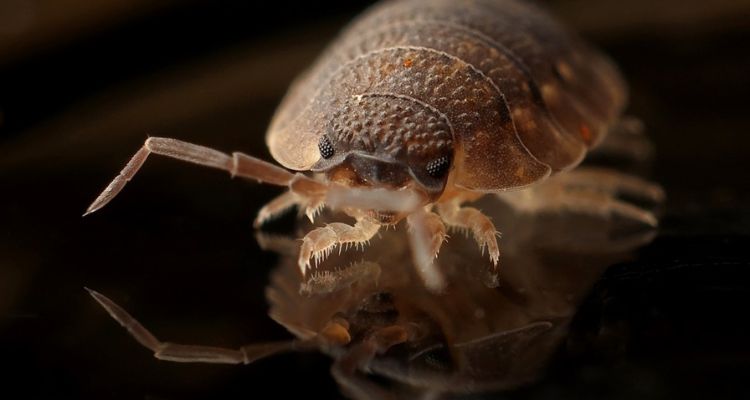Bed bugs are annoying and might be a health hazard due to severe skin rash. But the problem is, these tiny, blood-sucking creatures only come in the dark. Moreover, they are super-efficient in hiding, even in the smallest cracks and crevices, making identifying them hard.
Since these flaxseed-sized insects are creatures of the dark, it is hard to find them in daylight. However, you cannot control anything if you haven’t seen it with your eyes. So, it is essential to look for bed bug hideouts to have preventive measures.
Following are some ways you can find bed bugs during the day.
Understanding Bed Bug Behavior
Understanding their behavior is the first step to identifying bed bugs in sunny daylight. Once you know the attacking strategy of bed bugs, you can cope with the defense mechanism. Let’s observe some common behaviors of bed bugs:

- Eating Habits: Bed Bugs usually eat at night when you are sound asleep. They feast on your bare skin without disturbing you at night. Their first area of attack is your bare skin near their hideout. Bed bugs usually eat in groups, so the blood clots on your skin are clusters of bites.
- Feeding Time: Bed Bugs will take around 3 to 10 minutes per eating session to fuel themselves up. After days’ feast, they hideout behind cracks or crevices as they are suitable for the next 5 to 10 days to digest that food. The only lifetime goal of bed bugs is to eat, mate, produce eggs, and repeat. For that, adult bed bugs breed after every meal before going for another attack.
- Attractive Scent: Ironically, bed bugs don’t follow human scents. In fact, these nasty bugs cannot stand human aldehydes. Instead, bed bugs have a strong sense of warmth, carbon dioxide, and body heat. As a result, these creatures can identify their prey from 3 feet away.
Signs of Bed Bug Infestation
At first, you cannot tell a possible bed bug infestation until they have drawn the first blood. Itchy red spots on your skin will be the first indication that you might have bed bugs in your home. Since these creatures feed in clusters, you will also find their group traces. However, the following are some of the signs that can indicate that you have a possible bed bug infestation:
- Check red or black spots on your bed, as these creatures don’t travel long distances to get the next meal. The most common areas you can identify these creatures are pillows, headboards, bed frames, box springs, or mattress seams.
- Next, look for spots on the furniture near your bed. For instance, rugs, dressers, storage boxes, or nightstands.
- You might also identify signs of bed bugs in your bookshelves, couches, tables, chairs, or toys.
- Another possibility of bed bug infestation can be seen on the walls, window frames, door frames and hinges, pictures, vents or radiators, etc.
- If you find an unusual blood spot on your bed, there is a chance that you are in the presence of bed bugs.
Inspecting Bedding and Furniture
As you already know, bed bugs find the nearest hiding place from your body to rest and lay eggs after a meal. So, bedding and bedroom furniture is other areas that you can inspect for bed bugs in the daylight. An adult bed bug turns brownish after a meal, and they eat in groups so that you might notice black or red spots on the box spring, mattress seams, pillows, pillow covers, etc.
Moreover, your nightstand, head and footboard, table and chair, and sofas might also have unusual spots in significant clusters. Again, this might be an indication of bed bug infestation.
Checking Cracks and Crevices
Bed bugs are flat in structure, so they can get inside cracks and crevices as tiny as 2 millimeters. In this case, it is pretty hard to check for bed bugs in cracks and crevices, even in the dark, let alone in the daylight.
However, a suitable way to check the cracks or crevices for bed bugs is to use an old card or piece of paper which you can insert in that hole. It is better to be ready with a vacuum cleaner to suck any bed bugs that might come out of the cracks due to disturbance.
Searching Common Hiding Places
After having a meal, bed bugs tend to hide in the nearest places, where they stay for 5 to 10 days. In this regard, bed bugs can hide in the following familiar places around you:
- Mattress seams
- Head and leg boards
- Pillows and pillowcases
- Bed cracks and crevices.
- Box spring
- Other furniture
Using a Flashlight
Bed bugs are hard it identifies in bright daylight because they can hide in the tiniest places where it is hard to look for them. However, if you are sure about bed bugs in your bedroom, using a flashlight to identify them in the creeks and crevices is beneficial. You might also need a magnifying glass to determine the presence of bed bugs.
Conclusion
Bed bug infestation can be severe if not treated promptly and accurately. These creatures only feast at night and can fit inside the tiniest holes and creeks. Moreover, they only survive to eat and mate throughout their life span. It is hard to identify them in the daylight due to their size and hiding abilities. However, if you see an unusual red or black spot on your pillow, bed frames, mattress seams, headboards, or crevices in your furniture, there is a good chance that you have a bed bug infestation. Another indication of bed bug infestation is itchy red spots on your skin.
How To Find Bed Bugs During The Day FAQs
How Do You Draw Bed Bugs Out of Hiding?
Since bed bugs are the creatures of the night, the only way you will find them is in a dark or dim room. Next, bed bugs are only attracted by heat, so warming the area near your bed or furniture will signal the bugs for prospective prey. Another possible way is to spray some carbon dioxide near the cracks to attract the bed bugs.
If you are sure about bed bugs in your bedroom, shaking your bedsheet and mattress will disturb them, and they will leave their hiding places.
Where Do Bed Bugs Usually Hide During the Day?
Bed bugs have flat bodies that can fit in tiny holes and crevices. Bed bugs don’t travel far away from their prey and find hiding places near their victim. Usually, they will hide during the day in crevices, tiny holes in your furniture, pillows, box springs, nightstands, etc.
Do Bed Bugs Crawl On the Floor During the Day?
Bed bugs can crawl during the day to reach their next attack. These creatures hide indoor creeks, mattress seams, bed frames, or headboards. Therefore, they will crawl during the day to get to their hiding places.

